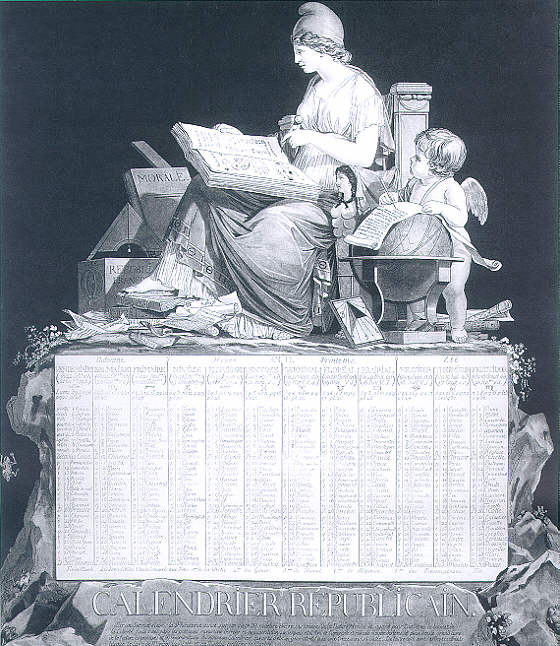Hochschule Augsburg
NTP Service
DCF77 Time Broadcast
The French Revolution 1792 introduced the "politically correct"
Republican Calendar, based upon the decimal system. Intended to dismiss
ecclesiastical influences, it couldn't prevail and was in use only until 1805.
For a description refer to the book "Calendrical Calculations"
mentioned in the page about "Time".
General
In Germany, the national institute for metrology
(Physikalisch-Technische Bundesanstalt,
PTB)
operates 'Cesium clocks' as time references.
The PTB broadcasts time synchronization signals
derived from the cesium clock signal
via the transmitter
DCF77
operated by the German Corporation
(
Media Broadcast GmbH).
Other countries operate similar services.
The Transmitter is located in Mainflingen near Frankfurt/Main.
The LF time signals are receivable in a radius of 2000 kilometers,
i.e. in great parts of Europe.
By this technology it is possible
to synchronize a wide variety of devices
(wristwatches, measuring instruments,
computers) to legal time
on nearly every location and at low cost.
Receivers
To synchronize a computer clock to UTC,
special external devices are needed.
There are expensive ones and cheap ones.
The former are (potentially) high-precision devices,
deviating from normal time only in the range of
microseconds. They are independent from any computer
in having their own processor and firmware.
The time signals are processed and formatted
into ASCII records of time data. These records are
sent via serial port periodically or on request.
One character of the record is the synchronization
character sent exactly on the second. There may be
an additional 'pulse per second' (PPS) output line.
In times of poor signal reception a built-in
crystal clock supplies sufficiently accurate time.
Actual time and receiver status are shown in a
display and by LEDs on the front panel.
All components are assembled in an own housing
and powered by batteries or a power supply.
The antenna may have a separate, weather-proof
housing mounted outdoors.
The cheap devices often are passive, lacking
even a power supply. They are extremely simple, but
the precision is yet in the range of milliseconds.
The Trick
These devices are mere receivers with a
RS232 interface, powered by positive DTR
and negative RTS line voltage.
The secondly time pulse is demodulated from
the AM signal and fed to the RxD line.
The pulses are read by a serial line driver
(tty) of the operating system and parsed
by software like the generic parse driver
of the
NTP daemon.
Each pulse is one bit of the DCF77 time code.
Pulse duration is 100 ms for '0' and 200 ms
for '1'. The tty driver is configured for
50 bits per second, so one bit will last 20 ms.
Regarding the start bit, a short pulse
should result in a byte received on the
serial port with the first (low order) 4 bits 0
and the rest 1. A long pulse would generate
a byte with all 8 data bits and one stop bit
set to 0, but the pulses may be shortened by
the receiver to avoid such problems.
The software receives one byte per second
as a time pulse. The bytes are interpreted
as '0' or '1' bits depending on their bit pattern.
A sequence of 59 pulses / bytes / bits in every minute
makes up the
DCF77 time code which is parsed for
date and time, daylight saving time (DST),
leap seconds etc.
So the computer does the whole job and no
logic hardware is needed in the DCF77 receiver.
That's why they are so cheap.
Information
Software and information special to DCF77 and Linux
you will find listed on a page of
Harald Milz
who will link you to some sites in Germany and around.
2003-06-21

